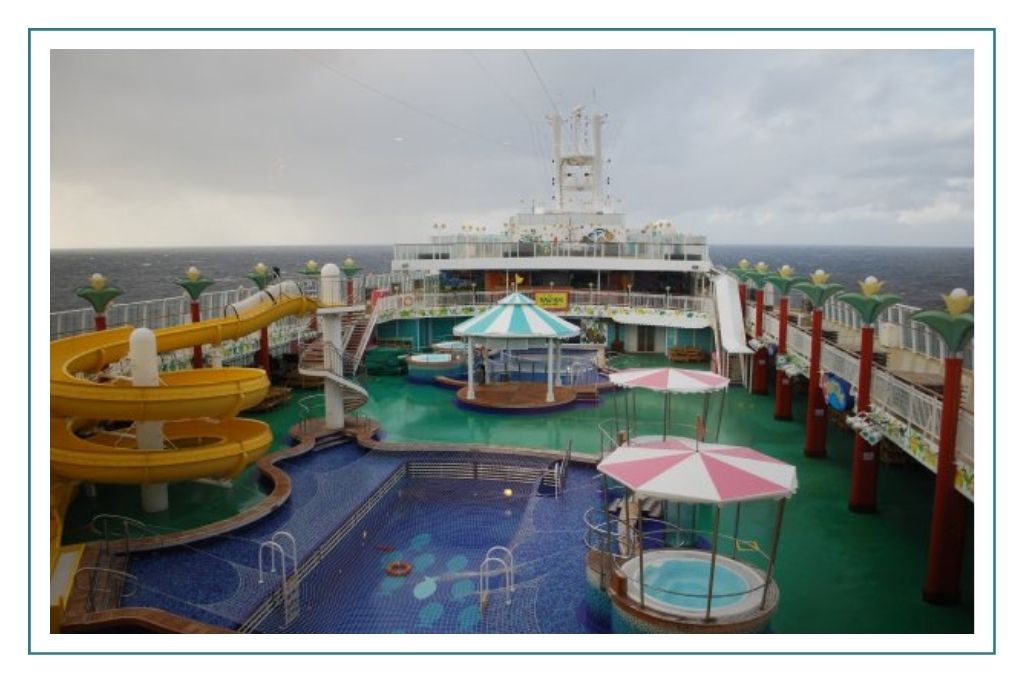Is a Transatlantic Cruise Right for Me?
Have you ever wondered what a Transatlantic cruise is like and if it would be a vacation you would enjoy? Let me share with you some amazing reasons why you might want to consider going on a transatlantic sailing (and maybe one reason why it might not be as enjoyable for everyone!).



What is a Transatlantic Cruise?
Cruise ships often spend half of the year sailing in one region and then move to another region for the second half of the year. For example, a ship may cruise the Mediterranean during the spring and summer months, and then relocate to the Caribbean for the winter to take advantage of the year-round warm temperatures. You can find transatlantic voyages from Southampton to New York City, Miami to Barcelona, or Copenhagen to Canada, among other routes. They usually occur during off-peak times and coincide with seasonal changes. Transatlantic cruises are typically longer than the average cruise, lasting at least one to two weeks, if not more. While the ship may make stops at a few locations along the way, most days of the cruise are spent at sea.


Will I be Bored on a Transatlantic Cruise?
When many people think of a cruise vacation, they might think of visiting a different port city every day of the journey. This can be exhilarating and is a fantastic way to see multiple locations without having to repeatedly pack and unpack. This kind of itinerary is certainly exciting, but I often find that there is never enough time to fully explore and enjoy all the the ship itself has to offer! Cruise ships are essentially floating cities with countless amenities and activities. On many of today’s modern cruise ships, you can find upwards of 20 restaurants and bars, spas, indoor and outdoor pools with waterslides and whirlpools, casinos, sports activities (bumper cars, mini golf, even bowling – complete with the ultra-stylish shoes, of course!), Broadway quality shows, trivia competitions, social events, and special activities like wine tastings or tours of the ship’s bridge. You can relax with no schedules or demands, be pampered from head to toe, and taste as many new cuisines as you’d like! As an added bonus, every direction you look, you will see the beautiful blue ocean sprawled out before you. You have to try very hard to become bored on a cruise ship!
*Pro Tip* If you feel like you might miss out on visiting locations on land, consider arriving a few days ahead of your sailing to explore the location on your own. For example, if you’re sailing out of Barcelona, fly to Paris or Rome three days early, and then take a train to Barcelona to board your cruise!




What are the Advantages of a Transatlantic Cruise?
Along with being able to fully relax and enjoy your time on the ship, there are several other advantages to a transatlantic cruise.
Because you are traveling slowly across the ocean, you won’t experience a rapid time change. Typically, the time will adjust by an hour or two each day of the crossing, so you will be able to avoid the dreaded jet-lag. In addition, having the freedom to walk around a cruise ship and sleep in a comfortable bed is much better than being cramped on a long international flight!
Most transatlantic cruises are considered repositioning cruises and sail during the low season, so you can often find great deals, especially at the last minute. Since the ship must make the voyage across the ocean to reach it’s new destination, cruise lines can offer staterooms at deeply discounted rates in order to fill the ship.



So, What’s the Down Side to a Transatlantic Cruise?
The waters of the open ocean are not always as calm as the sea, especially in the cooler months. You may be more apt to experience storms or rough seas on a transatlantic cruise than you would on other cruises. This could become a problem if you are prone to motion sickness. However, large cruise ships do have stabilizers that help minimize the feelings of tossing on the ocean, and there are remedies and medications that can bring relief if you are experiencing motion sickness. Compression wrist bands or seasickness patches are a great option. If you forget to bring some with you, the guest services desk onboard typically has patches or over-the-counter motion sickness medication to give out.
Colder, stormy weather can also mean that the pools onboard the ship are closed. Choose a cruise line that offers an indoor pool if you want to have a better chance of lounging poolside on your vacation.



If you have ever thought about taking a transatlantic cruise, or even if you’ve never heard of them until now, I would encourage you to consider it for your next trip. It could be one of the best cruise vacations you ever take! Contact me today and I will help find the perfect transatlantic sailing for you!
*Note: Transpacific cruises are also available and are similar to transatlantic cruises. However, they are usually even longer than transatlantic cruises due to the size of the Pacific Ocean.
